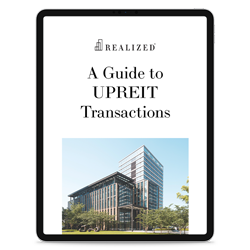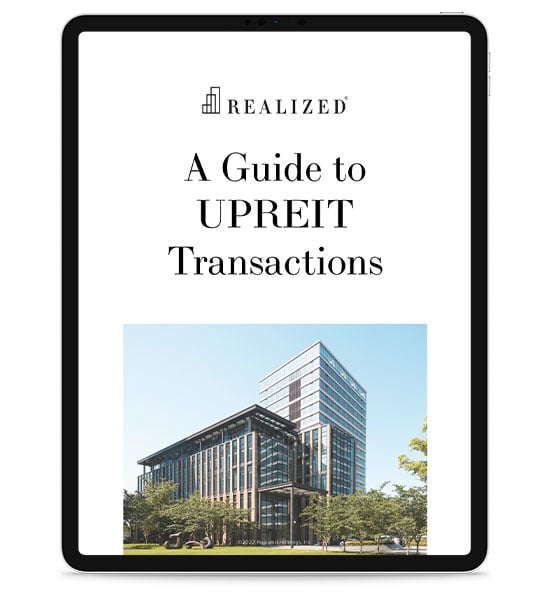
If you’re an investor interested in moving from direct to passive real estate ownership, contributing your property to a real estate investment trust (REIT) using the Section 721 exchange could be a viable tax-advantage strategy to help defer capital gains taxes.
REITs typically pay dividends to shareholders. However, you might wonder whether you receive dividends after contributing property through a 721 exchange–also known as an Umbrella Partnership Real Estate Investment Trust (UPREIT).
The short answer is “yes.” However, it’s important to consider the tax implications involved with UPREIT distributions.
Explaining an UPREIT
An UPREIT is a partnership owned by a REIT. You contribute your investment property to the partnership in exchange for operating partnership (OP) units. OP units represent fractional shares in the partnership and:
- Are equal in value to REIT shares
- Generally track REIT shares’ price movements
The difference between the two is how they’re taxed. If you contribute your real estate to an UPREIT partnership, you could defer capital gains taxes triggered by a property sale. However, capital gains taxes could be an issue when the REIT decides to sell that property. You could also trigger a taxable event by converting OP units into REIT shares or cash.
More About Income and Taxes
While you own the OP units, you can receive a fraction of the partnership’s total income every quarter, depending on how the Section 721 exchange is structured. Those distributions are equal in value to REIT dividends paid either quarterly or monthly. How much you receive depends on the dividend/distribution policy set by the REIT management. This is typically tied to REIT’s operating and financial performance.
OP unit distributions and REIT dividends are taxed as ordinary income. But at tax time, the forms differ:
- Form 1099-DIV reports REIT dividends, as REIT investors are considered shareholders
- Form 1065 (Schedule K-1) reports OP unit distributions, as these are considered partnership interests
If you own REIT shares, you receive only one Form 1099-DIV. However, as a holder of OP units, you could receive more paperwork. Your distributions might include income allocation from the states where the REIT owns property. As a result, you could end up with multiple K-1 schedules representing every state in which the REIT is active.
Dividends or Distributions?
While a REIT issues dividends to shareholders, a Section 721 exchange partnership provides distributions to partnership interests. Although the amount of these distributions may be similar to REIT dividends, they are taxed differently. Partnership distributions may be classified as ordinary income, return of capital, or capital gains, depending on the REIT’s earnings and tax treatment.
The UPREIT process could offer an exit from direct property ownership, potentially offering passive income without triggering immediate capital gains taxes. However, the complexity of the approach, as well as tax implications connected with distributions, could benefit from the services of a financial planner or tax advisor who is familiar with UPREITs. These experts can help determine whether a Section 721 exchange helps achieve your investment objectives.
The tax and estate planning information offered by the advisor is general in nature. It is provided for informational purposes only and should not be construed as legal or tax advice. Always consult an attorney or tax professional regarding your specific legal or tax situation.



